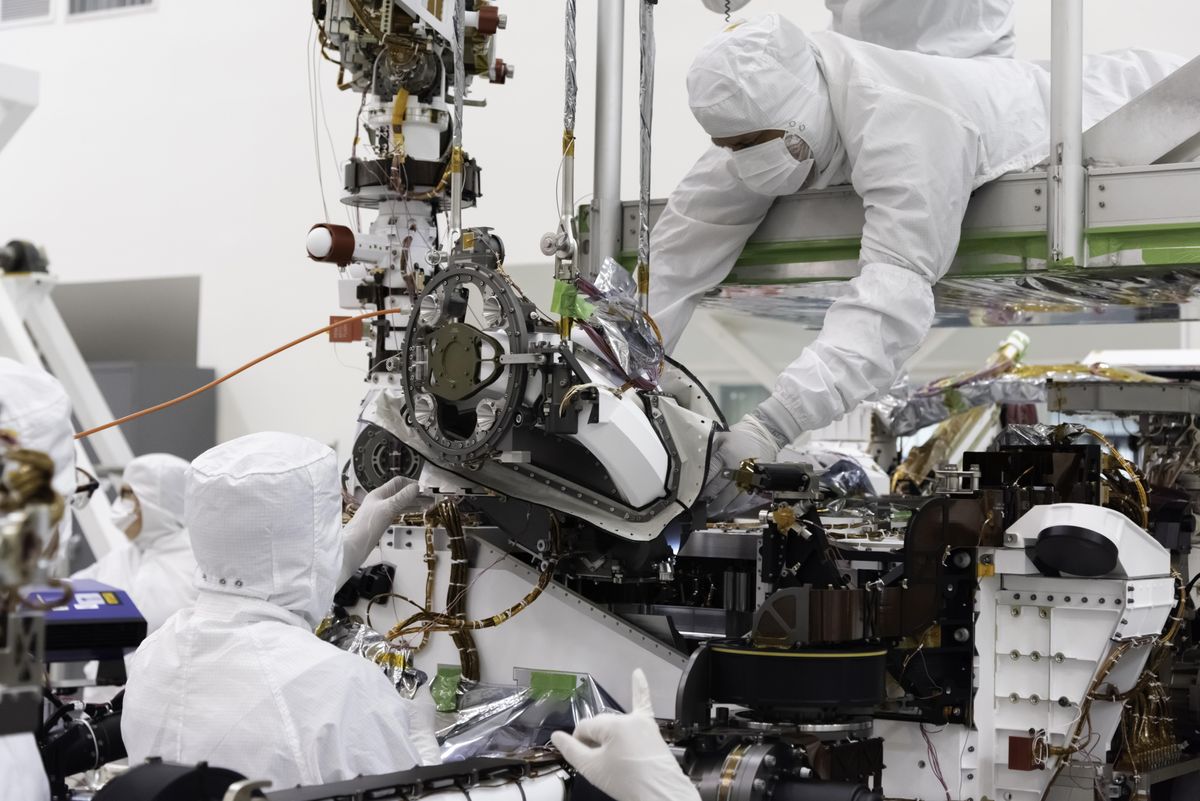
The White House has laid out a plan for overhauling the federal government's planetary-protection rules, which work to prevent contamination between Earth and other potentially habitable worlds.
The document outlines the government's plan for a suite of federal agencies to modernize planetary-protection rules over the course of the next year. Scientists and engineers discuss planetary protection in two directions: keeping other destinations free of meaningful Earth contamination and keeping our planet safe from potentially dangerous extraterrestrial materials. The plan is careful to note that in both directions, the government must consider both its own activities and those of commercial companies.
"Current and future missions to Mars and other destinations necessitate a strategy to support a safe, sustainable and predictable Earth and space environment," Scott Pace, executive secretary of the National Space Council and deputy assistant to President Donald Trump, said in a statement released on Dec. 30.
Related: NASA fed Apollo 11 moon rocks to cockroaches (then things got weird)
The new plan builds on a goal included in a Space Policy Directive the Trump administration issued earlier in December. "By establishing objectives for the implementation of the 2020 National Space Policy's direction on planetary protection, this strategy continues American leadership in scientific discovery, human exploration and private-sector space activities," Pace said in the new statement.
Developing the strategy fell — and implementing it will fall — to the Planetary Protection Interagency Working Group established in July, which brings together nearly 20 federal agencies, of which NASA is only one. Others include the departments of agriculture, homeland security, transportation and defense, as well as the Centers for Disease Control and Prevention, the Environmental Protection Agency, the FBI and the Federal Emergency Management Agency (FEMA).
Such collaboration on issues of potentially planet-wide concern has precedent. During preparations for the Apollo 11 moon mission, which would return lunar rocks to Earth for the first time ever, public health officials in particular were instrumental in developing processes to assess the safety of astronauts and samples alike upon landing here. Similarly, FEMA is a key partner when NASA studies issues surrounding potential impacts of nearby asteroids.
In the new strategy document, the working group highlights the age of existing planetary-protection guidelines and the changing nature of spaceflight as motivations for new procedures. For example, the report cites ongoing work to bring back samples from Mars, NASA's long-term goal of sending humans to the Red Planet and the general prevalence of commercial space players.
Some of these trends may intersect; SpaceX in particular has touted its plans to land humans on Mars, targeting an ambitious timeline that could move faster than NASA's. Whether crewed or robotic missions, the government wants to prepare for an expected boom in commercial space launches beyond Earth orbit.
"Given the rapid growth in private-sector space capabilities and activities, it is very possible that United States companies will be key participants in the search for life," the group wrote.
NASA is well aware of the challenges of current planetary-protection guidelines. In 2019, the agency commissioned an independent group of experts to evaluate steps forward. The resulting report cited similar concerns and laid out 77 points for the agency to consider.
But NASA doesn't necessarily have say in private missions, an issue raised in the agency's own report and underscored in the new strategy, which sets a tighter timeline for the projects that relate to commercial outreach. The new plan calls for surveying relevant private-sector representatives about planetary protection within three months and creating guidelines for government oversight of commercial projects within six months.
The working group's other projects require developing frameworks for evaluating or addressing a handful of other aspects of planetary protection, including crewed missions and sample return.
Two big questions are not addressed by the strategy document: what, if any, review processes the new procedures will undergo, and how the incoming administration led by President-elect Joe Biden will execute the document's plans.
Email Meghan Bartels at mbartels@space.com or follow her on Twitter @meghanbartels. Follow us on Twitter @Spacedotcom and on Facebook.
"House" - Google News
January 05, 2021 at 04:32AM
https://ift.tt/359Ob2A
Planetary protection needs more than just NASA, White House plan says - Space.com
"House" - Google News
https://ift.tt/2q5ay8k
Shoes Man Tutorial
Pos News Update
Meme Update
Korean Entertainment News
Japan News Update
Bagikan Berita Ini














0 Response to "Planetary protection needs more than just NASA, White House plan says - Space.com"
Post a Comment